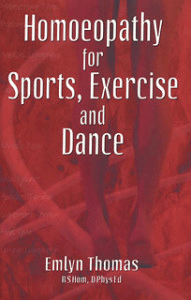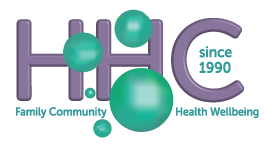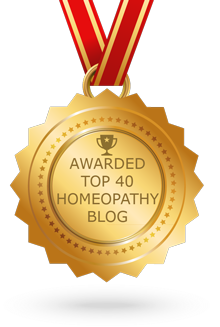Book Review – Homeopathy for Sports, Exercise and Dance
From – The Homeopath
Number 77 – Spring 2000
Author: Emlyn Thomas
Reviewed by Katherine Armitage
This is a beautifully produced, compact handbook full of easily accessible information. It is written by a man with years of homeopathic experience and who is himself no stranger to physical endurance, having led major expeditions to many great mountain ranges, including the Himalayas.
As well as for the homeopath, and for anybody who participates in sport or dance, this book is intended for club managers, coaches and dance directors. Who, it is hoped, once familiar with the contents, will be able to maintain their team, club or company’s performance by ensuring more effective recovery from injury and overstrain and by using homeopathy to maximise their athletes’ potential.
As this book is intended to be used by anybody, with or without knowledge of homeopathy, to treat quite complex and simple sports, exercise and dance injuries, the first five chapters map out the homoeopathic principles and how to use them.
There are plenty of case examples, starting with Rhus tox and Arnica cases, which are echoed by other equally apt cases throughout the book that give very clear illustrations of these, and ninety or so other first aid and constitutional remedies.
Knee injuries – Homeopathy for sports injury, exercise and dance
Pages 112 to 129 are devoted to the knee, the most frequent source of injury in sport. The section starts with the case of a skier who fell on a very steep slope, and was diagnosed with a torn medial ligament. He was seen on return from his holiday, having been very disconsolate.
After Arnica 30c, one every hour for a day, followed by Ruta 30c three times in one day, he was immediately less depressed and allowed his wife to remove his strapping and take back his crutches. With physiotherapy and exercises he was back at work and exercising fully within a week.
Emlyn stresses the importance of a medical diagnosis where necessary, physiotherapy and RICE (rest, ice, compression, elevation) or other appropriate therapy, but he effectively demonstrates over and over again, with his case examples, how homoeopathy can help speed up the process of recovery, regardless of the diagnosis, and change a patient’s mental and emotional state for the better.
Osgood – Schlatter Disease
In the knee section he covers anterior knee pain, patellofemoral pain (runner’s knee), haematoma, infrapatellar tendinitis, Osgood- Schlatter disease (which is apparently as painful as it sounds, caused by repetitive strenuous exertion), collateral ligament injuries, with a case, and first-stage and second-stage remedies.
He covers long-term effects of knee injury, iliotibial band syndrome, torn meniscus, torn cruciate ligament (it was at this point that I reached for my anatomy book and felt excited at looking at the knee!), before knee surgery, after knee surgery, bursae and bursitis and posterior knee pain.
 Susceptibility to injury
Susceptibility to injury
Chapter 10 is a mini materia medica of all the remedies mentioned in the book. The final chapters cover ‘Susceptibility to Injury’ and ‘Enhanced Performance’. Emlyn says: ‘There can be no question that professional dancers rank among the fittest and most dedicated of physical performers.
It is among the most demanding forms of human movement and, as such, increases our knowledge of what the human body can achieve under stress’. He explores how homoeopathy, as well as helping with recovery, can aid development.
He gives the case of an 18- year-old rugby player who came because of an ankle injury. He suffered from frequent sprains. He looked big and strong (6 feet tall and 200lbs) he worked hard at his training, but his strength and power were much less that his build suggested and ‘his muscles were soft and lacking in tone’.
His coach described him as ‘flabby’. He displayed other symptoms of Calcarea carbonica: he could be obstinate at times and take offence at slight remarks, and then would sit alone and sulk.
After a couple of doses of Calcarea carbonica 1M, ‘His ankle recovered quickly and after two months the coach reported that his game had improved. He seemed stronger and fitter.
The following season he was a changed player. His body shape had firmed up, his speed around the field had improved, and he had lost his flabbiness. He went on to play at a good standard and realised his potential’.
The whole book is peppered with anecdotes of Emlyn’s sensitive experience, and there is a feeling of a deep love of the human form and what it can achieve if properly cared for!
Homeopathy for the person keen on cycling and playing tennis
Being a keen tennis player and cycling daily in London I know how much importance I attach to keeping fit and recovering quickly if I am injured.
I think that this would be an invaluable book for any homoeopath, any household, school, sports or dance club and even for hospital Accident and Emergency departments. If they could see how well homoeopathy worked in shock and trauma their job would be made so much easier and the grassroots publicity for homoeopathy would be phenomenal.
I hope that it is widely distributed so that it achieves its aims, as I think that it has been very well planned, researched and put together.
Available at the HHC online shop.
- The importance of Muscle Mass in menopause - 12/03/2025
- Penny’s gluten free bread recipe - 14/10/2024
- Children and bedwetting: What can parents do to help? - 01/10/2024




Leave a Reply